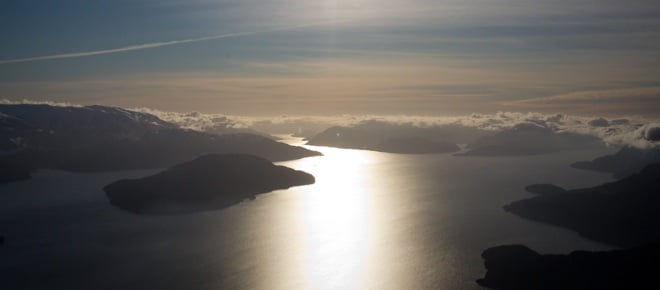7 instances of Germans going missing in B.C.’s wilderness
The wilds of North America have long held a deep fascination for German travellers
This Tuesday, Jan. 10, 2012 photo shows the Douglas Channel, the proposed shipping route for oil tanker ships in the Enbridge Northern Gateway Project, just south of Kitamaat, British Columbia, Canada. Thwarted in his hopes of getting a new pipeline to carry oil into the U.S., Canadian Prime Minister Stephen Harper is backing an alternative option: Asia. But in pushing for a pipeline to carry oil from Alberta to the Pacific, he’ll face the same environmental objections that blocked the U.S. option. (AP Photo/The Canadian Press, Darryl Dyck)
Share
The wilds of North America have long held a deep fascination for German travellers, a romance that goes back to the novels of Jack London or Karl May, a German writer whose fanciful tales from the turn of the last century captured the German imagination, even though May himself had little first-hand experience of the new world.
Over the years, that fascination has translated into mortal danger for Germans who venture into the B.C. wilderness unprepared, naive, or just unlucky.
Here is a list of incidents in which Germans have perished, or come awfully close.
1. Sept. 2, 1983: A small aircraft carrying six multi-millionaires—including Otto Herman Stitz, Rolf Dieter Falk, Hans Hill, and Peter Hoffman—took off in Campbell River, on Vancouver Island, bound for Smithers, 2½ hours north. The Germans were on their way to Spatsizi provincial park; they never made it. Searchers have never managed to recover their small aircraft.
2. Oct. 2, 2004: Tourist Guenter Gorg Brauning, 50, set out on a hiking trail in Wells Gray Park and took a wrong turn, walking 24 km into the bush. Five nights later, after search teams failed to locate him, Brauning found his own way back to the campground, and was later reunited with his wife in surprisingly good health.
3. March 11, 2006: Foreign student Adrian Gress, 29, ignored advice that he not embark on a hike to Grouse Mountain, and set out without snowshoes. Hours later and eight kilometres into the brush he was thigh-deep in snow. He was found alive the next morning after a night in the elements. “He lucked out,” said a North Shore Search and Rescue staffer. “He should right now be in the morgue.”
4. Aug. 1, 2008: Michael Raster, 43, an “experienced backcountry traveller,” stepped out of a float plane at Tuchodi Lake, in the extreme landscape of northern B.C., and began a planned 40-day, 150-km solo trek through some of the harshest backcountry in Canada. He did not turn up for his scheduled pickup at Frog Lake and has never been seen again.
5. July 1, 2009: Sander Jain, a 23-year-old living in Tofino, set out for a hike in nearby Pacific Rim National Park Reserve. He was reported missing after failing to show up for work, triggering a costly search and rescue operation. Four days later authorities called that search off, after reports surfaced that Jain had purchased a bus ticket to Nanaimo’s ferry terminal and had gone on to Vancouver.
6. Sept. 9, 2010: A seven-person documentary film crew from Germany entered the woods north of Chilliwack, unprepared for a planned hike to a nearby glacier: they carried no rain gear, had just one tarp between them and had forgotten their camp stoves in their vehicles. Bad weather left them wet and cold and, in several cases, hypothermic. They called for help late on the second day, forcing rescue crews to retrieve them that evening in bad weather. They’d also forgotten their wallets, and were put up in a North Vancouver hotel for the night.
7. June 27, 2012: The body of a hiker was found off a backcountry trail near North Vancouver. The B.C. Coroner’s Service later identified the body as that of exchange student Jasper Houben, aged 22.
Sources: News reports, B.C. Coroner’s Service
 Have you ever wondered which cities have the most bars, smokers, absentee workers and people searching for love? What about how Canada compares to the world in terms of the size of its military, the size of our houses and the number of cars we own? The answers to all those questions, and many more, can be found in the first ever Maclean’s Book of Lists.
Have you ever wondered which cities have the most bars, smokers, absentee workers and people searching for love? What about how Canada compares to the world in terms of the size of its military, the size of our houses and the number of cars we own? The answers to all those questions, and many more, can be found in the first ever Maclean’s Book of Lists.
Buy your copy of the Maclean’s Book of Lists at the newsstand or order online now.
